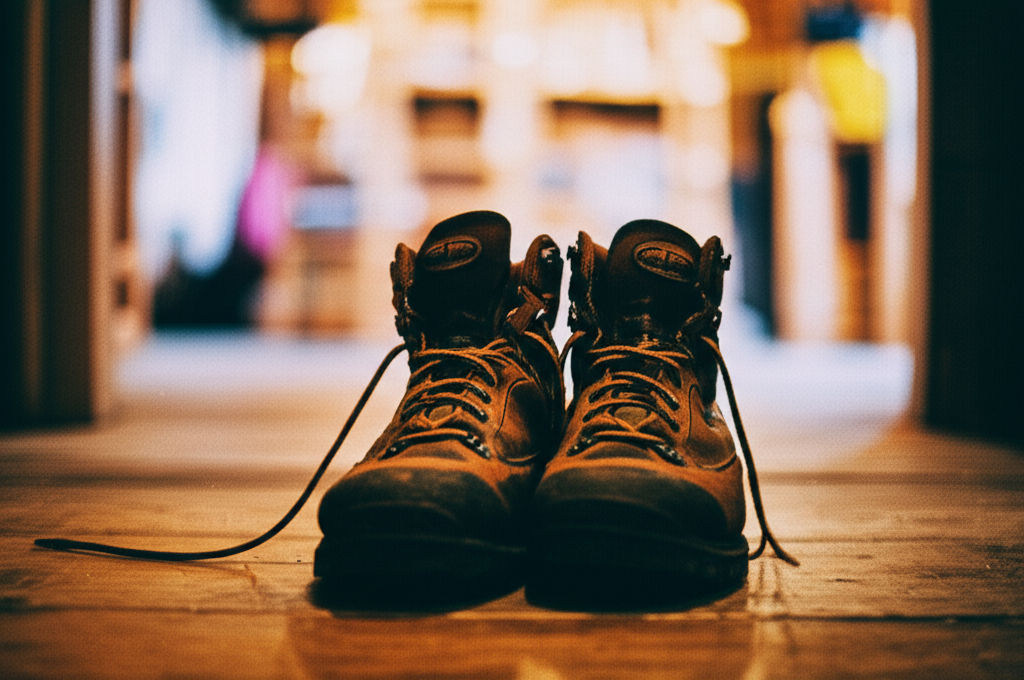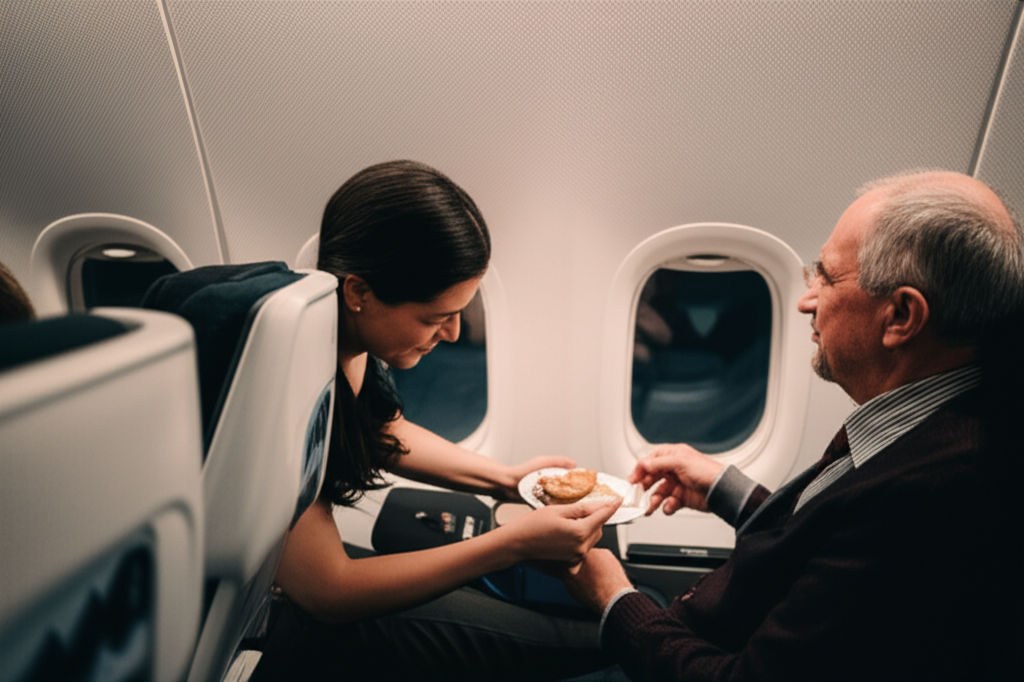How far mosquitoes travel
Ikhsan Rizki

Photo: Planning a trip? Discover how far mosquitoes travel, why it impacts your safety, and get essential tips to protect yourself from bites and diseases.
Unveiling the Mystery: How Far Mosquitoes Truly Travel and Why It Matters for Your Next Trip
The incessant buzz, the itchy bite, the potential for disease – mosquitoes are often the unwelcome companions on any journey. But have you ever stopped to wonder, how far mosquitoes travel? It's a question that plagues many travelers, especially when venturing into exotic locales. Understanding their reach isn't just a matter of curiosity; it's crucial for effective protection, helping you stay safe and comfortable wherever your adventures take you.
This comprehensive guide will demystify the travel habits of these tiny insects. We'll explore the factors influencing their flight range, reveal the surprising distances some can cover, and, most importantly, provide actionable insights for safeguarding your health. Ready to uncover the truth behind the mosquito's journey? Let's dive in.
The Surprisingly Varied World of Mosquito Flight
When we talk about how far mosquitoes travel, it's not a single, fixed answer. Just like birds or mammals, different mosquito species have different capabilities and motivations for movement. Their flight range is influenced by a complex interplay of biological and environmental factors.
What Influences Mosquito Travel Distance?
Several key elements dictate just how far a mosquito might roam from its birthplace:
- Species Specifics: Different mosquito species possess varying physiological capacities for flight. Some are naturally strong fliers, while others are content to stay closer to home.
- Wind Conditions: A gentle breeze can be a significant aid, helping mosquitoes drift far beyond their active flight range. Strong winds, however, can be detrimental, blowing them off course or even killing them.
- Availability of Resources: Mosquitoes are always on the hunt for two things: blood meals (for females to lay eggs) and suitable breeding sites (stagnant water). The distance they travel is often dictated by the proximity and abundance of these vital resources.
- Obstacles and Terrain: Dense forests, large bodies of water, or urban landscapes with tall buildings can act as barriers or corridors, influencing their flight paths and ultimate travel distance.
- Temperature and Humidity: Optimal conditions encourage more active flight, while extreme heat or cold can limit their movement.
Average Flight Range of Common Mosquito Species
While individual circumstances vary, here's a general idea of the mosquito travel distance for some well-known species:
- Aedes aegypti (Yellow Fever Mosquito): These notorious daytime biters, responsible for transmitting dengue, Zika, and chikungunya, are typically "container breeders" and relatively weak fliers. Their average flight range is quite limited, often less than 100 meters (about 330 feet) from their breeding site. However, they can be easily transported by humans.
- Aedes albopictus (Asian Tiger Mosquito): Another aggressive daytime biter and disease vector, Aedes albopictus also has a relatively short flight range, generally around 200-500 meters (650-1,640 feet). Like Aedes aegypti, human transport is a major factor in their spread.
- Culex Species (Common House Mosquito): These are common nighttime biters and vectors for West Nile virus and Japanese encephalitis. Their flight range is more extensive than Aedes species, often reaching 1-3 kilometers (0.6-1.8 miles) from their breeding grounds.
- Anopheles Species (Malaria Mosquito): Perhaps the most infamous, Anopheles mosquitoes are responsible for transmitting malaria. Their flight capabilities vary significantly by species, but many can travel considerable distances, sometimes up to 2-3 kilometers (1.2-1.8 miles), and in some cases, even further with favorable winds.
Beyond the Buzz: Factors Affecting Long-Distance Mosquito Travel
While the "average" flight range gives us a baseline, mosquitoes can, and do, cover much greater distances under specific conditions. Understanding these scenarios is key to appreciating the true scope of how far mosquitoes travel.
Wind-Assisted Journeys: When Mosquitoes Go Further
Think of a mosquito as a tiny glider. While their own power might be limited, a sustained breeze can carry them for miles. This is particularly true for species that fly higher or are caught in updrafts. Swarms of mosquitoes have been observed being carried by winds for tens, or even hundreds, of kilometers, effectively "migrating" over significant geographical barriers like deserts or even stretches of ocean. This passive dispersal is a major factor in the rapid spread of certain mosquito-borne diseases.
Human-Assisted Travel: The Unintentional Hitchhikers
Perhaps the most significant factor in long-distance mosquito travel is us! Humans are inadvertently excellent transporters of mosquitoes and their eggs.
- Vehicles: A single mosquito can easily hitch a ride in a car, bus, or train, traveling hundreds of miles in a day.
- Aircraft: International flights are prime vectors for transporting mosquitoes across continents, potentially introducing new species and diseases to previously unaffected regions. This is a serious concern for public health agencies worldwide.
- Shipping Containers and Luggage: Mosquito eggs, particularly those of Aedes species, are incredibly resilient and can survive desiccation for months or even years. They can be transported in dry containers, tires, or even in your luggage, only to hatch when they encounter water at a new destination. This is how invasive mosquito species establish new populations.
The Search for Blood Meals and Breeding Grounds
The fundamental drivers behind mosquito movement are survival and reproduction. A female mosquito, needing a blood meal to develop her eggs, will actively seek out hosts. If local resources are scarce, she will expand her search radius. Similarly, if her current breeding site dries up, she'll embark on a journey to find new stagnant water sources. This constant quest for vital resources contributes significantly to their overall mosquito travel distance.
Why Does Their Travel Distance Matter for Travelers?
Knowing how far mosquitoes travel isn't just academic; it has direct implications for your travel planning and personal safety.
Understanding Disease Transmission Zones
The ability of mosquitoes to travel, whether by their own power or with human assistance, directly impacts the spread of mosquito-borne diseases. A mosquito that can fly or be carried for miles means that:
- Disease outbreaks can spread rapidly: A localized outbreak in one village can quickly become a regional or even national concern if infected mosquitoes are transported.
- New areas become vulnerable: Regions previously free of certain diseases might suddenly face risks due to the introduction of infected mosquitoes or invasive mosquito species. For instance, the spread of Zika virus was heavily influenced by the global movement of Aedes aegypti and Aedes albopictus mosquitoes.
- Protection needs to be comprehensive: Relying solely on protection within your immediate accommodation might not be enough if mosquitoes are traveling from nearby areas or being brought in.
Strategic Protection: Beyond Your Immediate Vicinity
If mosquitoes can travel significant distances, your protective measures must extend beyond your immediate surroundings. This means considering the broader environment of your destination and understanding that a threat might originate further away than you'd expect. It emphasizes the importance of consistent, widespread protection rather than just isolated efforts.
Practical Tips for Travelers: Protecting Yourself from Mosquitoes
Given the potential distances mosquitoes can cover, proactive and comprehensive protection is paramount for any traveler.
Personal Protection: Your First Line of Defense
- Use Effective Insect Repellent: Apply repellents containing DEET, picaridin, oil of lemon eucalyptus (OLE), or IR3535 to exposed skin. Always follow product instructions for reapplication.
- Wear Protective Clothing: Opt for long-sleeved shirts, long pants, and socks, especially during peak mosquito biting hours (dawn and dusk for many species, but Aedes bite during the day). Light-colored clothing may also be less attractive to mosquitoes.
- Treat Clothing with Permethrin: For added protection, treat clothing, gear, and mosquito nets with permethrin. Do not apply permethrin directly to skin.
- Sleep Under a Mosquito Net: If your accommodation isn't air-conditioned or screened, use an insecticide-treated mosquito net, ensuring it's tucked securely under your mattress.
Environmental Protection: Making Your Space Safer
- Choose Accommodations Wisely: Opt for hotels or guesthouses with air conditioning or well-maintained window and door screens.
- Eliminate Standing Water: Even small amounts of standing water (flowerpot saucers, discarded tires, clogged gutters) can be breeding grounds. If staying in self-catering accommodation, regularly empty and clean any containers that can hold water.
- Be Mindful of Peak Hours: While some mosquitoes bite all day, many are most active during dawn and dusk. Plan your outdoor activities accordingly or ensure maximum protection during these times.
Staying Informed: Knowledge is Power
- Check Travel Health Advisories: Before you go, consult your national health organization (e.g., CDC in the US, NHS in the UK) or a travel clinic for the latest information on mosquito-borne disease risks in your destination.
- Consult a Travel Doctor: Discuss your itinerary with a travel health professional who can advise on necessary vaccinations (e.g., Japanese Encephalitis, Yellow Fever) and prophylactic medications (e.g., antimalarials).
- Monitor Local News: Stay aware of any local health alerts or outbreaks during your trip.
Conclusion
The question of how far mosquitoes travel reveals a complex picture. While many species have a limited flight range, environmental factors like wind and, crucially, human activity can extend their reach significantly. From a few hundred meters to thousands of kilometers via planes and cars, mosquitoes are incredibly adaptable travelers.
For you, the intrepid explorer, this knowledge underscores the importance of comprehensive and consistent protection. Understanding their potential range empowers you to take proactive steps, ensuring that your memories of a trip are filled with adventure, not itchy bites or illness. By being informed and prepared, you can minimize your risk and enjoy your travels to the fullest.
What are your go-to mosquito protection tips when traveling? Share your experiences in the comments below!
Frequently Asked Questions
Q1: Can mosquitoes travel across oceans?
A1: While mosquitoes cannot typically fly across vast oceans on their own power, they can certainly be transported across oceans via human means, primarily on ships and airplanes. Mosquito eggs, which are highly resilient, can also be carried in cargo or luggage, hatching upon arrival in a new location.
Q2: How long can a mosquito live?
A2: The lifespan of a mosquito varies greatly depending on the species, environmental conditions (temperature, humidity), and availability of food. Male mosquitoes typically live for only about a week, while female mosquitoes can live for several weeks to a few months, especially if they enter a state of diapause (a type of hibernation) during colder periods.
Q3: Do all mosquitoes bite?
A3: No, not all mosquitoes bite. Only female mosquitoes bite humans and animals. They require a blood meal to obtain the protein and nutrients necessary for developing their eggs. Male mosquitoes, on the other hand, feed on nectar and plant juices.
Q4: What time of day do mosquitoes travel most?
A4: The time of day mosquitoes are most active for travel and biting varies by species. Many common species, such as Culex and Anopheles, are most active during dawn and dusk, and throughout the night. However, Aedes species, which transmit diseases like dengue and Zika, are notorious for biting during the daytime.
Q5: How far can a mosquito smell a human?
A5: Mosquitoes have a highly developed sense of smell and can detect carbon dioxide (exhaled by humans) from distances of up to 30-50 meters (100-165 feet). They are also attracted to other human odors like lactic acid, ammonia, and certain fatty acids, which they can detect from closer ranges.
Citations: Centers for Disease Control and Prevention. (n.d.). Aedes aegypti. Retrieved from CDC website. Centers for Disease Control and Prevention. (n.d.). Aedes albopictus. Retrieved from CDC website. University of Florida IFAS Extension. (n.d.). Common Mosquitoes of Florida. Retrieved from UF IFAS Extension website. World Health Organization. (n.d.). Malaria Fact Sheet. Retrieved from WHO website. World Health Organization. (n.d.). Vector-borne diseases: How they spread. Retrieved from WHO website. American Mosquito Control Association. (n.d.). Mosquito Biology. Retrieved from AMCA website. National Geographic. (n.d.). Mosquitoes. Retrieved from National Geographic website. Centers for Disease Control and Prevention. (n.d.). Prevent Mosquito Bites. Retrieved from CDC website. ScienceDaily. (2015, February 2). Mosquitoes sense carbon dioxide at long range. Retrieved from ScienceDaily website.
Business
View All
November 19, 2025
Why Deloitte Is Laying Off ConsultantsUnderstand why Deloitte is laying off consultants. Economic headwinds, post-pandemic overhiring, and shifting client needs are key factors.
Ikhsan Rizki

August 11, 2025
Review of HON Office FurnitureChoosing office furniture? Our HON review covers reliability, affordability, and who it's best for, helping you pick the right fit for your workspace.
Ikhsan Rizki

August 31, 2025
Best Ways to Find Costco Coupons in 2025Unlock maximum Costco savings in 2025! Discover how to find Instant Savings, use the app, and get email deals for ultimate discounts.
Ikhsan Rizki

November 5, 2025
Virginia Business Search Made EasyUnlock Virginia business info effortlessly! Our guide simplifies SCC searches for name availability, due diligence, and company details. Get reliable results.
Ikhsan Rizki

August 14, 2025
Business Lessons from Busy SpiderUnravel the secrets of success! Discover how a spider's strategic web design, persistence, and efficiency can transform your business.
Ikhsan Rizki

September 10, 2025
How to Style a Risky Business OutfitElevate your office style! Master the "risky business outfit," balancing professionalism with a confident, fashion-forward edge.
Ikhsan Rizki
Economy
View AllUnpack "full employment" beyond zero unemployment. Discover its true meaning, impact on the economy, and how it shapes policy. Master key economic concepts.
Ikhsan Rizki
Decatur, GA on a budget? Learn strategies to find an affordable, quality hotel stay. Enjoy your trip without sacrificing comfort or location!
Ikhsan Rizki
Find comfortable, clean, and affordable economy lodges for your next trip. Our guide helps you discover budget-friendly stays near you!
Ikhsan Rizki
Unlock motivation with the power of token economies! Learn the psychology behind this system to drive positive behavior and achieve goals.
Ikhsan Rizki
Upgrade your long-haul flight! Discover ITA Airways Premium Economy: enhanced comfort, more space, and amenities without the business class price tag. Is it for...
Ikhsan Rizki
Is Singapore Airlines Economy a cut above? Uncover its premium comfort, world-class entertainment, and renowned service in this guide.
Ikhsan Rizki
Education
View AllMaster "Physical Education" in Spanish! This guide covers "Educación Física," "EF," and regional variations like "Gimnasia." Speak confidently!
Read MoreDiscover special education teacher salaries! Learn national averages, key influencing factors, and strategies to boost your income in this rewarding career.
Read MoreUncover the UGA Marine Center in Savannah, GA. Dive into groundbreaking marine research, education, and conservation protecting Georgia's coast.
Read MoreEmpower your child's special education journey. An IEE offers an unbiased second opinion to ensure their needs are truly met.
Read MoreShape the future of education! Explore Director of Education jobs, key responsibilities, and career paths for experienced leaders.
Read MoreUnpack why Democratic AGs are suing the Education Dept. Learn the key issues, from student loans to policy, and their impact on American education.
Read MoreHealth
View All
September 24, 2025
Pueblo Community Health ServicesDiscover Pueblo Community Health Services (PCHS): accessible, comprehensive medical, dental, & behavioral health for all in Pueblo. Your guide to quality care.
Ikhsan Rizki

August 24, 2025
LifeStance Health Reviews TodayConsidering LifeStance Health? Get real patient insights. Explore services, reviews, and tips to decide if this mental health platform is right for you.
Ikhsan Rizki

November 6, 2025
Ponce Health Sciences University InfoPonce Health Sciences University (PHSU): A distinguished choice for health education, offering diverse programs, cutting-edge research & community focus.
Ikhsan Rizki

November 29, 2025
San Jose Behavioral ServicesSan Jose behavioral services: Your guide to mental wellness in Silicon Valley. Find local support & thrive amidst life's pressures.
Ikhsan Rizki

October 26, 2025
Follow My Health Northwell Login TipsGet seamless access to your Follow My Health Northwell patient portal. Our guide offers tips to resolve login issues and manage your health records with ease.
Ikhsan Rizki

August 24, 2025
Top 25 Health Science Jobs for 2025Unlock your future! Discover the top 25 in-demand health science jobs for 2025. Find a fulfilling and stable career in healthcare.
Ikhsan Rizki
Popular Articles
View All
1
2
3
4
5
6
7
8
9
10
Lifestyle
View All
November 2, 2025
What is HM Lifestyle on your credit card
Mysterious "HM Lifestyle" charge on your card? Unravel what it means, from H&M purchases to potential fraud, and how to investigate.

September 18, 2025
Life With a Five Million Dollar Net Worth
Ever wonder what life with $5M net worth is *really* like? Uncover the true realities, responsibilities, and financial freedom beyond the luxury.

November 24, 2025
Inside Red Monkey Lifestyle Brand
Red Monkey Lifestyle Brand: Authentic rock & roll style handcrafted in America. Unique, vintage-inspired accessories for those who stand out.

October 1, 2025
The Passage Hotel Is a Must Stay
The Passage Hotel Basel: Your must-stay destination for luxury, comfort, and an unbeatable city center location. Unforgettable travel awaits!

August 13, 2025
Manchester Adult Lifestyle Overview
Unlock your best life in Manchester! This guide covers top neighborhoods, career insights, leisure, and community to help you thrive in this vibrant city.

October 8, 2025
Bose Model 5 Music System
Explore the Bose Model 5 Music System. Get immersive, room-filling sound from a sleek, compact home audio solution. Rediscover your music!

November 8, 2025
Inside the world of Lifestyle Inc
Explore "Lifestyle Inc," the vast ecosystem shaping modern life. Understand its influence, make mindful choices, and take control of your well-being.

November 18, 2025
Are Lifestyles Prices Worth It
Are your lifestyle choices worth the cost? Decode "lifestyle prices" to ensure you're getting true value from your spending.
Sports





Travel
View All
October 31, 2025
Tex Best Travel Center Roadside Stop
Find the perfect pit stop in Texas! Tex Best Travel Center offers clean restrooms, diverse fuel, and food to redefine your road trip experience.

October 4, 2025
EOS Vanilla Cashmere Hand Cream Travel Size
Banish dry travel hands! Get soft, hydrated skin on the go with EOS Vanilla Cashmere Hand Cream Travel Size. Your compact hydration secret.

September 27, 2025
Prayer for Safe Travel
Find peace and protection for your journey. Discover how a powerful prayer for safe travel can reduce anxiety and bring divine peace of mind.

August 5, 2025
Direct Line travel insurance
Direct Line travel insurance: No new policies. Existing customer? This guide helps you manage your policy, understand coverage, & navigate claims.

October 4, 2025
Fellow Travelers Book on Love and Politics
Discover Thomas Mallon's "Fellow Travelers," a poignant novel masterfully intertwining forbidden love with McCarthy-era political paranoia.

November 7, 2025
Lululemon Travel Bag for Active Lifestyles
Elevate your active travel! Find the ultimate Lululemon bag for seamless organization, durability, and style on all your adventures.

















